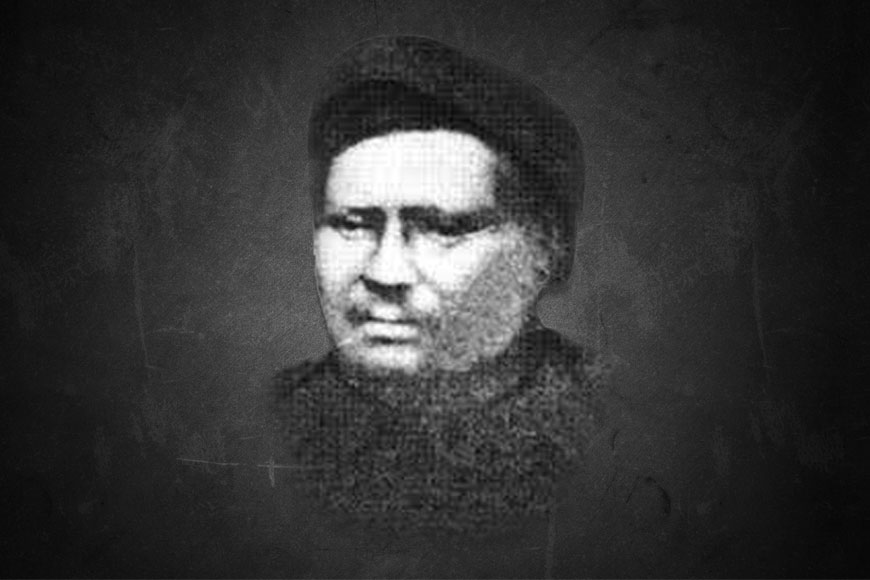Bangla Tappa, born from Banjara music popularized by Nidhu Babu - GetBengal story

Bengal has always had a rich legacy of musical forms since ancient times but one classical form introduced in Bengal had its roots in the musical journey of caravan travelers of north and northwestern India. An extremely niche form of music that found its place in the elite Bengali Gharana, Tappa, got amalgamated beyond borders. The other three classical forms that found a place in the Bengali musical arena were dhrupad, they, and thungri. Tappa itself is subdivided into two types: Hindustani and Bangla. The gifted music expert, Golam Nabi, alias Shori Mian (1742-1792), of the court of the Nawab of Ayodhya, elevated Hindustani Tappa to the level of classical music while Ramnidhi Gupta aka Nidhu Gupta (1741-1839) introduced Bangla Tappa that is popularly known as Nidhu Babu r Tappa.
Among those who composed Bangla Tappa during Nidhu Babu's time and later were Kali Mirza and Sridhar Kathak. Even a few songs by Rabindranath Tagore appear to be influenced by Tappa, such as 'hala na hala na sai, hay/ marame marame lukano rahila, bala hala na' (it never came about dear friend, alas/it remained untold in the heart of hearts). Later, the influence of Tappa is noticeable in Dwijendralal Roy’s composition rich in ragas. An example of this is 'ami raba chiradin taba pada chahi.'
History goes back, as Arab traders arrived in the Punjab region through Iran and Afghanistan for trading and performed their kind of music along the way at night as they traveled in groups with their commodities heaped on camels’ back. With the passing of time, this kind of music developed into a type of regional song associated with the camel riders. In Punjab, this folk song was known as 'dhapa', which was transformed into the Hindi Tappa. Radhamohan Sen has written in his book Sabgit Tarabga: “Punjab haite haila Tappar janam/ dui charaner madhye tahar niyam” (Tappa originated from Punjab and it abides by the rules of two sentences). Shori Mian added melodious ornamentation to it.
In Hindi Tappa means 'lampha' (jump), or 'brief'. There is no scope for extension of the tone as in Dhrupad or Khayal, so Tappa has to be brief. Following the format of Kheyal, the sentences of this song consist of just two divisions. Love story and a sense of loss are central themes. The specialty of the Hindustani Tappa is its rolling pace based on its fast and subtle knotty construction. The arrangement of words with the help of vibration of tone performed in an exquisite vocal style creates a charming atmosphere. With stresses before and after (tal) rhythm, and the use of 'ad-kuyad' rhyme, this type of song unfolds its aesthetic beauty gradually. Shori Mian's Tappas are based on ragas like 'khambaj', 'sindhu', 'jhinjhit' and in Punjabi 'madhyaman tal' etc.
Ramnidhi Gupta, the founder of the Bangla Tappa became familiar with the Hindustani Tappa of Shori Mian when he was receiving lessons in music from a Muslim ustad (maestro) while working in the Chhapra district. On completion of his service, he returned to Calcutta and introduced Bangla Tappa in imitation of the Hindustani Tappa. The specialty of this type of song is putting mid-level swinging vibration on each tone so that the words are delivered at a rolling pace. Nidhu Babu used soft vibration in place of the swiftness of Shori Mian's tone to accentuate the poetic beauty of Bangla song. But he did not bring about any real change in using the ragas and tals of Hindustani Tappa. Besides, love songs, he also composed Brahma Sangeet in the Tappa form. One such song is: 'Parambrahma tatparatpar parameshvar/ Niravjan niramay nirbishese sadashay/ apna apni hetu bibhu bishvadhar' (behag/ada).
An extremely niche form of music that found its place in the elite Bengali Gharana, Tappa, got amalgamated beyond borders. The other three classical forms that found a place in the Bengali musical arena were dhrupad, they, and thungri. Tappa itself is subdivided into two types: Hindustani and Bangla.
Among those who composed Bangla Tappa during Nidhu Babu's time and later were Kali Mirza and Sridhar Kathak. Even a few songs by Rabindranath Tagore appear to be influenced by Tappa, such as 'hala na hala na sai, hay/ marame marame lukano rahila, bala hala na' (it never came about dear friend, alas/it remained untold in the heart of hearts). Later, the influence of Tappa is noticeable in Dwijendralal Roy’s composition rich in ragas. An example of this is 'ami raba chiradin taba pada chahi.' Rajanikanta Sen, Atul Prasad, and Nazrul's songs were not really influenced by Tappa. After Nazrul, Bangla vocal music took a turn that has further reduced the popularity of the Tappa. However, Tappa is yet to lose its appeal totally to connoisseurs of music. Surprisingly a musical form born from camel caravans of North India found a foothold in Bengal’s musical gharana.











